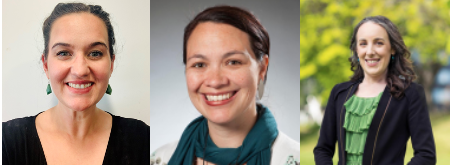You are here
Home › TLRI research › Research in progress › Whatua tū aka › Ngā pūrākau o Te Kura o Tuahiwi. A Kaupapa Māori Case study: a mixed methods approachNgā pūrākau o Te Kura o Tuahiwi. A Kaupapa Māori Case study: a mixed methods approach
Ō mātou hoa kōtui
The research partner of Te Kāhui Pā Harakeke, Child Wellbeing Research Institute at the University of Canterbury is Te Kura o Tuahiwi. This kura community brings to the research partnership a long history of collaboration with UC, a staunch sense of mana motuhake, and a passion for evidence based effective Māori teaching and learning. Each kaiako, through the leadership of their tumuaki, is committed to making sure every ākonga has a foundation for future successes. Aroha ki te tangata, te Tuahiwi ki te whai ao!
Kupu whakataki / Whakamārama mō te kaupapa
The research team in partnership with Te Kura o Tuahiwi has undertaken this project to co-construct pūrākau (ancestral/ cultural stories) to implement in the school’s reo rua and rumaki classrooms. We will measure the impact of the pūrākau on early literacy teaching and learning as well as the sociocultural impact on our ākonga, whānau and kaiako. This study will be guided by Kaupapa Māori values and methodology.
Ngā whāinga
The aim of this project is to investigate opportunities that place based pūrākau create in reo rua and rūmaki classrooms at the site of Tuahiwi school. This team will explore this kaupapa through three whāinga:
• Pūrākau development: These pūrākau will be specifically curated to capture the unique stories of Ngai Tūāhuriri hāpū, as a resource to support children’s oral language development and their connection to Māori culture, stories and language.
• Impact on language development: These pūrākau will be produced in Te Reo Māori and a hybrid of Te Reo Māori and English (bilingual). The early readers will be developed based on associated research within the Better Start Literacy Approach, which examines the best ways to support young children to acquire the necessary skills to be successful readers.
• Impact on ākonga, whānau and kaiako: Secure cultural identity is a critical factor in the success of ākonga Māori (Macfarlane et al. 2014), including the use of relevant resources for teaching and learning; whānau and kaiako are key stakeholders in ensuring ākonga Māori have opportunities in seeing themselves in teaching resources.
He aha tēnei rangahau i hira ai?
Traditionally, Māori communities have not benefited from research (Smith, 2012). Our aim as indigenous and nonindigenous academics is to authentically partner with Māori communities for the benefit of Māori. We value pūrākau as an important vehicle to convey traditional values, foster communication and are central to the sharing of philosophy, knowledge, views and experiences (Lee 2009). Engaging with shared stories draws heavily on oral language and listening comprehension, which are also important skills required for children to engage in the classroom and develop as a reader. Despite their cultural significance and potential for impactful learning for ākonga, little research is focused on the use and usefulness of pūrākau as rauemi for early literacy development.
Te mahi ka mahia e mātou
Ngā koha:
Pūrākau development: This will bring together the community of stakeholders for Te kura o Tuahiwi to partner in the development of the five pūrākau. The process will be grounded in ngā uara Māori: manaakitanga, whanaungatanga, ako, wānanga and rangatiratanga. This collaboration will be overseen and guided by a kaitiaki from Ngāi Tuāhuriri to ensure cultural safety.
Impact on language development: What is the impact of pūrākau resources on vocabulary learning in te reo Māori and English? This approach uses a pre-test, post-test design to investigate the expressive and receptive knowledge of elaborated and unelaborated vocabulary (words included in the shared book but not systematically explained during the reading) of tamariki before and after exposure to these words during shared reading over the course of 10 weeks
Impact on ākonga, whānau and kaiako: What are the social and cultural impacts of having these resources available from the perspective of kaiako, whānau and ākonga? This will be measured through wānanga at key points during the study: before the recording pūrākau (with kaiako), during development (with ākonga and whānau), after development of pūrākau before implementation (with ākonga, whānau and kaiako)
Te tātari:
A Kaupapa Māori methodological approach to this case study in this instance best meets the wāwata, (aspirations) of this kura through descriptive and exploratory approaches to the collection of both qualitative and quantitative koha.
Ngā taipitopito hoapā
Whakaahua
Principal investiagtor: Jennifer Smith (left)
Te Kāhui Pā Harakeke: Child Wellbeing Research Institute, University of Canterbury
276 Antigua Street, Christchurch Central City, Christchurch 8011 Level 4 Manawa Building, jennifer.smith@canterbury.ac.nz, 03 369 0733

